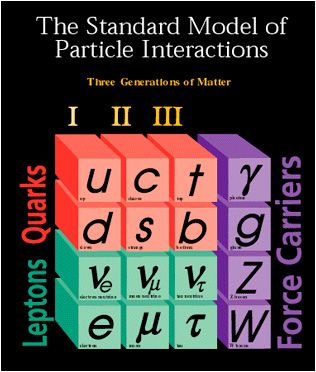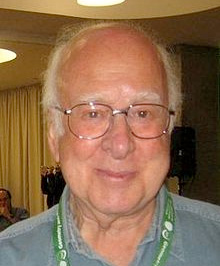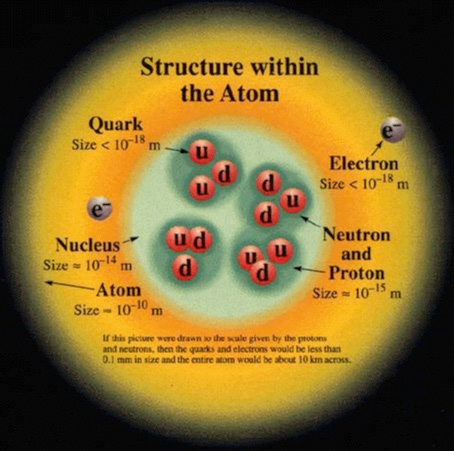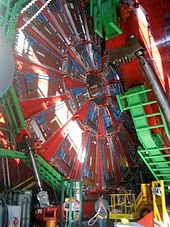 Once a year Mentor has a customer appreciation event in Silicon Valley with a guest speaker on some aspect of science. This is silicon valley, after all, so we all have to be geeks. This year it was Dr Sean Carroll from CalTech on The Particle at the End of the Universe, the Hunt for The Higg’s Boson and What’s Next.
Once a year Mentor has a customer appreciation event in Silicon Valley with a guest speaker on some aspect of science. This is silicon valley, after all, so we all have to be geeks. This year it was Dr Sean Carroll from CalTech on The Particle at the End of the Universe, the Hunt for The Higg’s Boson and What’s Next.
 Wally Rhines asked who Higgs was but Dr Carroll didn’t give much detail. He is actually an emeritus professor of physics from the Edinburgh University in Scotland. Since the physics department, like computer science, was in the James Clerk Maxwell Building while I was doing my PhD and then working for the university, I presume we had offices in the same building (it’s large). As an aside, Edinburgh is famous for naming its buildings after people that it snubbed. James Clerk Maxwell, he of the equations of electromagnetism, was turned down for a lectureship. Biology is in the Darwin building. Charles Darwin wasn’t much interested in the courses in medicine he took at Edinburgh and either failed and was kicked out or moved on to London on his own volition, depending on which version of the story you like. Anyway, he never graduated.
Wally Rhines asked who Higgs was but Dr Carroll didn’t give much detail. He is actually an emeritus professor of physics from the Edinburgh University in Scotland. Since the physics department, like computer science, was in the James Clerk Maxwell Building while I was doing my PhD and then working for the university, I presume we had offices in the same building (it’s large). As an aside, Edinburgh is famous for naming its buildings after people that it snubbed. James Clerk Maxwell, he of the equations of electromagnetism, was turned down for a lectureship. Biology is in the Darwin building. Charles Darwin wasn’t much interested in the courses in medicine he took at Edinburgh and either failed and was kicked out or moved on to London on his own volition, depending on which version of the story you like. Anyway, he never graduated.
So what about particles? In the early 20th century, everything was simple: we had protons and neutrons forming the nucleus of atoms and electrons whizzing around the outside like planets. There were all those quantum mechanical things about where the orbits had to be to stop the electrons just spiraling into the nucleus. And how the nucleus stayed together was unclear.
 Around the time I was an undergraduate, the existence of the strong nuclear force was postulated (well, something had to stop the nucleus flying apart) and the realization that particles were actually made of three quarks (“three quarks for Muster Mark”, James Joyce in Finnegan’s Wake). The strong nuclear force was transmitted by gluons (that glued the nucleus together). Luckily, in my quantum mechanics courses we only had to worry about Bohr’s simple model of the atom. The weak nuclear force had actually be proposed by Fermi as another way to keep the nucleus together, and it was a force that only operated over tiny distances (unlike, say, electromagnetism, strong nuclear force and gravity which operate over infinite distances albeit vanishingly weakly as distances get large).
Around the time I was an undergraduate, the existence of the strong nuclear force was postulated (well, something had to stop the nucleus flying apart) and the realization that particles were actually made of three quarks (“three quarks for Muster Mark”, James Joyce in Finnegan’s Wake). The strong nuclear force was transmitted by gluons (that glued the nucleus together). Luckily, in my quantum mechanics courses we only had to worry about Bohr’s simple model of the atom. The weak nuclear force had actually be proposed by Fermi as another way to keep the nucleus together, and it was a force that only operated over tiny distances (unlike, say, electromagnetism, strong nuclear force and gravity which operate over infinite distances albeit vanishingly weakly as distances get large).
 Gradually the standard model was filled in (and it turned out that Group Theory had some practical applications outside of pure math). Various quarks were discovered. The gauge bosons that carry the weak nuclear force were found. But there was an empty box in the standard model, the Higgs boson. Rather like Mendeleev predicting certain elements nobody had ever seen because there was a hole in the periodic table, the standard model had a hole. The Higgs boson is required to explain why some particles have mass and why they don’t move at the speed of light all the time.
Gradually the standard model was filled in (and it turned out that Group Theory had some practical applications outside of pure math). Various quarks were discovered. The gauge bosons that carry the weak nuclear force were found. But there was an empty box in the standard model, the Higgs boson. Rather like Mendeleev predicting certain elements nobody had ever seen because there was a hole in the periodic table, the standard model had a hole. The Higgs boson is required to explain why some particles have mass and why they don’t move at the speed of light all the time.
You probably know that the Higgs boson was discovered (technically it is extremely likely that it was detected but these things are probablistic) at the large hadron collider at CERN, which runs underneath parts of Switzerland and France. and cost $9B to build. There was also a US collider that was started in Texas that would have been 3 times as powerful, but in the wonderful way of Congress, it was canceled…but only after $2B had been spent for nothing.








Comments
0 Replies to “Mentor Teaches Us About the Higg’s Boson”
You must register or log in to view/post comments.